MAKING RED WINE
- DECIDE ON VARIETAL AND SELECT GRAPES
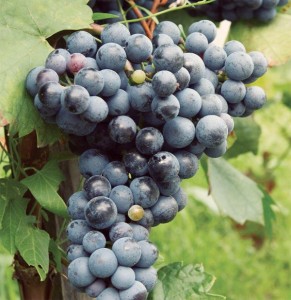 At Grapes N’ Barrels, the first step in your wine-making experience is your selection of the wine you would like to make. The decision may be based on wine tastings, wine qualities sought, discussion of wine preferences, or based on your own preference. Whatever your choice, we will endeavor to guide and provide exactly what fits your wine choice, your time available, and your desired level of involvement. We will guide you through the best method to make your wine and we will provide the best fresh grapes, frozen musts, or wine juices available to make your wine.When it comes to grapes, there is a consensus among wine makers: ‘Higher quality grapes yield the best wines’. Grape quality is affected by a variety of factors: Climate and weather during the growing season, soil minerals and acidity, time of harvest and vine pruning method.
At Grapes N’ Barrels, the first step in your wine-making experience is your selection of the wine you would like to make. The decision may be based on wine tastings, wine qualities sought, discussion of wine preferences, or based on your own preference. Whatever your choice, we will endeavor to guide and provide exactly what fits your wine choice, your time available, and your desired level of involvement. We will guide you through the best method to make your wine and we will provide the best fresh grapes, frozen musts, or wine juices available to make your wine.When it comes to grapes, there is a consensus among wine makers: ‘Higher quality grapes yield the best wines’. Grape quality is affected by a variety of factors: Climate and weather during the growing season, soil minerals and acidity, time of harvest and vine pruning method. 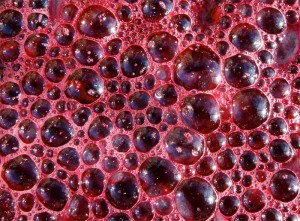 The combination of these effects is often referred to as the grape’s terroir. In fact, some consider all aspects of human intervention part of the terroir. For example, what to grapes to plant, what yeasts to use for fermentation, and yes… even the choice of oak barrel for aging.At Grapes N’ Barrels we strive to offer the best quality fresh wine grapes, frozen grape must, and wine grape juices available.“Terroir =Quality=Best Results”
The combination of these effects is often referred to as the grape’s terroir. In fact, some consider all aspects of human intervention part of the terroir. For example, what to grapes to plant, what yeasts to use for fermentation, and yes… even the choice of oak barrel for aging.At Grapes N’ Barrels we strive to offer the best quality fresh wine grapes, frozen grape must, and wine grape juices available.“Terroir =Quality=Best Results” - CRUSH-DESTEM GRAPES
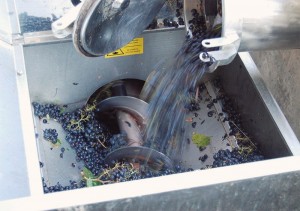 When using red fresh wine grapes, the first Grapes N’ Barrels hands-on winemaking session involves the crushing and destemming of the grapes. The process is done by machine and involves moving the crated grapes into the crusher where stems are removed and juice, skins, seeds are pumped into a fermentation tub in the form of “grape must”… it looks like a thick, soupy mix of mashed grapes.At this point, we have red wine grape juice that we want to convert to ‘wine’ so we have to begin fermentation. At the same time it is at this critical point that we also consider the timing and effects of maceration. Maceration is where tannins, coloring agents, flavor compounds— are leached from the grape skins, seeds and stems into the grape must. There are numerous points of view and approaches relative to the duration of maceration …but, for our purposes here, suffice it to say we follow the simple rule of once primary fermentation is almost completed, the good qualities resulting from maceration are mostly achieved.[Winemakers Note: When making white wines, grapes are crushed, destemmed (optional), and pressed immediately. Maceration is not desired for the majority of white wine grape varieties.]“Must + Maceration”
When using red fresh wine grapes, the first Grapes N’ Barrels hands-on winemaking session involves the crushing and destemming of the grapes. The process is done by machine and involves moving the crated grapes into the crusher where stems are removed and juice, skins, seeds are pumped into a fermentation tub in the form of “grape must”… it looks like a thick, soupy mix of mashed grapes.At this point, we have red wine grape juice that we want to convert to ‘wine’ so we have to begin fermentation. At the same time it is at this critical point that we also consider the timing and effects of maceration. Maceration is where tannins, coloring agents, flavor compounds— are leached from the grape skins, seeds and stems into the grape must. There are numerous points of view and approaches relative to the duration of maceration …but, for our purposes here, suffice it to say we follow the simple rule of once primary fermentation is almost completed, the good qualities resulting from maceration are mostly achieved.[Winemakers Note: When making white wines, grapes are crushed, destemmed (optional), and pressed immediately. Maceration is not desired for the majority of white wine grape varieties.]“Must + Maceration” - PRIMARY FERMENTATION
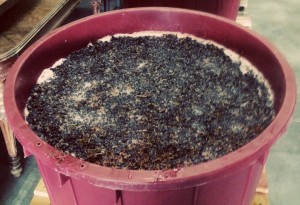 Once participants have completed their Crush-Destem Session, the Grapes N’ Barrels team takes over to induce fermentation. The process is called primary fermentation.Generally speaking, natural yeast is present on the grapes when crushed and fermentation can occur naturally. However, results are not very predictable and can lead to ‘stuck fermentation’ …where fermentation does not complete its desired cycle. Grapes N’ Barrels winemakers use cultured yeasts that are specifically conducive for fermenting the type of wine desired.Primary fermentation is where cultured yeast is introduced to the grape must and it feeds on sugar in the must. The yeast multiplies and as it does it converts the sugar present in the must to carbon dioxide gas and alcohol (ethanol).Careful monitoring of key measures during the fermentation process provides good insight into how fermentation if progressing and what we can expect as far as the alcohol content of the wine. At Grapes N Barrels one of our key measures is focused on the level of sugar in the ‘must’ which is measured by “degrees Brix” (°Brix).Ideally we seek to have an initial °Brix of somewhere in the 24 -28 range for red wines. As a general rule of thumb, one gram of sugar converts to about one-half gram of alcohol. So, if we desire an alcohol level of 12% we will need to start with a grape must of 24 °Brix. The higher the Brix level the greater the Alcohol content possible. Red wines fall in the range of 12-14% alcohol. Higher alcohol levels can make the wine ‘hot’…which translates to very powerful in alcohol which alters taste.There is another key aspect to primary fermentation: Winemakers must assure that the grape must “cap” is punched down daily.In primary fermentation, the carbon dioxide pushes-up the grape must skins and seeds into what is called a “cap”. The cap forms as a top layer of the ‘must’ and has to be “punched down” two to three times a day during fermentation. The process is important in that by mixing the skins and liquid grape must juice each day, maceration (soften by soaking) occurs which enhances wine color and tannins and other phenolic compounds.“Sugar ~ °Brix ~ Alcohol ~ Wine”
Once participants have completed their Crush-Destem Session, the Grapes N’ Barrels team takes over to induce fermentation. The process is called primary fermentation.Generally speaking, natural yeast is present on the grapes when crushed and fermentation can occur naturally. However, results are not very predictable and can lead to ‘stuck fermentation’ …where fermentation does not complete its desired cycle. Grapes N’ Barrels winemakers use cultured yeasts that are specifically conducive for fermenting the type of wine desired.Primary fermentation is where cultured yeast is introduced to the grape must and it feeds on sugar in the must. The yeast multiplies and as it does it converts the sugar present in the must to carbon dioxide gas and alcohol (ethanol).Careful monitoring of key measures during the fermentation process provides good insight into how fermentation if progressing and what we can expect as far as the alcohol content of the wine. At Grapes N Barrels one of our key measures is focused on the level of sugar in the ‘must’ which is measured by “degrees Brix” (°Brix).Ideally we seek to have an initial °Brix of somewhere in the 24 -28 range for red wines. As a general rule of thumb, one gram of sugar converts to about one-half gram of alcohol. So, if we desire an alcohol level of 12% we will need to start with a grape must of 24 °Brix. The higher the Brix level the greater the Alcohol content possible. Red wines fall in the range of 12-14% alcohol. Higher alcohol levels can make the wine ‘hot’…which translates to very powerful in alcohol which alters taste.There is another key aspect to primary fermentation: Winemakers must assure that the grape must “cap” is punched down daily.In primary fermentation, the carbon dioxide pushes-up the grape must skins and seeds into what is called a “cap”. The cap forms as a top layer of the ‘must’ and has to be “punched down” two to three times a day during fermentation. The process is important in that by mixing the skins and liquid grape must juice each day, maceration (soften by soaking) occurs which enhances wine color and tannins and other phenolic compounds.“Sugar ~ °Brix ~ Alcohol ~ Wine” - WINE PRESSING
Once our testing measures show that fermentation is nearly complete, our grape must has transitioned to a wine must. The fermentation process has typically spanned about two weeks and we are now ready for the second Grapes N’ Barrels hands-on session: Wine Pressing.In short, the session involves pumping out as much wine from our fermentation tub as possible. Then we place the remainder of our must… skins, seeds, etc. into a Wine Press and mechanically pressing out the wine. The wine is transferred directly to its secondary fermentation storage container which may be an oak barrel, stainless steelThe decision as to when to ‘press’ is very important and will affect the overall wine results. At pressing, maceration and extraction of tannins and phenolics ceases. At Grapes N’ Barrels we rely on °Brix, taste, and color in arriving to our point of readiness.The Wine Pressing is about extracting ‘all’ of the fermented juice out of the must. Generally, we expect that we will have about 60%-70% ‘free run’ wine (liquid) and 30%-40% of the wine will be pressed from our must.It should be noted that the pressed wine may have a different level of pH, higher volatile acidity, a higher level of phenolics. These factors can result in high tannin content and acidity which may negatively affect the wine. These variables are assessed and addressed before and during the secondary fermentation process.“Free Run + Press Juice” - SECONDARY FERMENTATION
Once the Wine Pressing is completed and the wine is transferred from its primary fermentation tub to its next storage container (barrel/stainless/demijohn) we have embarked upon what is termed Secondary Fermentation.Basically, there is still a minute amount of sugar that needs to be converted to alcohol and we need to begin to clarify the wine of and discard any physical precipitates. The Grapes N’ Barrels team initiates and monitors the next wine making phase of Secondary Fermentation carefully. We also initiate a process called “Malolactic Fermentation… MLF”. The process takes about two months and is followed by Racking the wine.If you have ever tasted wine that has a bit of a ‘tart’ quality, chances are that the presence of malic acid which occurs naturally in grape must, is still present. To reduce or eliminate the tartness, we initiate a secondary fermentation by inoculating the wine with special lactic acid bacteria which converts the undesirable malic acid (found in wine must) to the more desirable lactic acid. This conversion has positive effects on the wine.Malolactic fermentation decreases acid in the wine and softens the wine’s overall mouthfeel. Descriptions of the Secondary Fermentation – MLF effect: Wines have a rounder and fuller mouthfeel, richer and buttery flavors prevail, greater palate softness, and enhanced body and flavor of the wine.There is strong evidence that if MLF takes place while the wine is in wooden barrels, the integration of oak flavors with those of the wine enhances overall wine quality.During the Secondary Fermentation stage, the wine will also undergo clarification which takes place over the 2-3 month period. Sediment and “lees’ (dead yeast) precipitates to bottom and the wine is then ready to be “Racked”.“Secondary Fermentation = MLF” - RACKING WINE
The third hands-on Grapes N’ Barrels winemaking session is focused on racking the wine. This is an optional session since the required activity time is short. Nonetheless, it is an important step in the winemaking process and the wine racking scheduling may fall at a time that fits a participant’s schedules and/or interest. So, all winemakers are invited to rack their wine as their schedules and interest permits. Otherwise, Grapes N’ Barrels will complete the wine racking.At Grapes N’ Barrels the wine racking process entails siphoning the wine from its original barrel (used during secondary fermentation) to a clean barrel. The process enables clarification and stabilization of the wine by removing various undesired contents of the wine that have settled or precipitated to the bottom of the barrel. We seek to discard: Pulp, grape skin particles, lees (dead yeast), tannins, phenolic compounds, tartrates, and more. This will prepare the wine for longer term aging.If wine is left to age on the insoluble materials resting at the bottom of the barrel… wine taste will be altered and possibly negatively affected. By racking the wine, we hope to eliminate any factors that could negatively impact the wine. At the same time, we are preparing and placing wine where it will be allowed to age uninterrupted.“Racking Wine ~ Clarifies ~ Stabilizes” - AGING WINE
Not all wines improve with age. Only about ten percent (10%) of all red wine and five percent (5%) of white wine will taste better after five years than it will after just one year!At Grapes N’ Barrels, we strive to assure that the inherent qualities of the wine selected are reached. As such, wine aging is subjective and varies with each wine made.Grapes N’ Barrels start-to-finish time-line for your wine:The start-to-finish time-line for each wine is dependent on a variety of factors such as: Choice of wine, the wine grape material state (fresh/frozen/juice), winemaking methods followed, nature’s wine-aging ‘magical’ effects, and of course, what you… the artisan vintner likes and seeks as an end-result. As a rule of thumb, the amount of wine comprising your batch and storage method will help predict time-lines for wine completion. Here are a few generalizations that will allow you to gauge how soon your wine will be ready to bottle and drink:The wine storage method for aging … the longer the aging required before bottling.Full Barrels… 50-60 Gallons… anywhere from 6 months to 1 year +One-half barrel… 25 Gallons…anywhere from 4 months to 8 monthsDemijohns… 14+ Gallons…anywhere from 3 months to 6 monthsWine preference is very personal thing and much related to what one likes: To some a wine may have its desired qualities, be very pleasant, appealing and ready to enjoy … to others… more time …bottle-aging is required before drinking.Some wines are best enjoyed while ‘young’… and others, ‘improve with age’. It’s up to you! Whatever your choice… it is the right path to take! Enjoy your wine!Note: Our first and foremost priority is assuring the finished wine has the desired characteristics of the varietal or blend selected. Grapes N’ Barrels will assure that the quality, clarity, essential wine characteristics are on target throughout the wine aging process. Once we move to bottling, you can rest assured that your wine is ready to drink, share with others, or gift!“Age Wine ~ Enhance Qualities” - BOTTLE and LABEL YOUR WINE
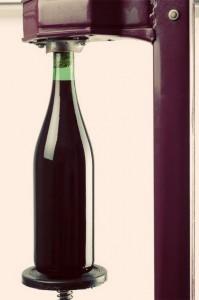 Bottling and Labeling the wine is the fourth and final hands-on session At Grapes N’ Barrels. Perhaps this more than any other session is a celebration of sorts… first to celebrate the completion of the wine process, next to share in the celebration of a successful outcome with your fellow winemakers, and lastly, to drink and take home your own wine!The session includes creating a production line that includes people bottling the wine with a professional wine bottler, people corking the wine with a manual bottle corker, someone capping the wine bottle with a heat-shrink decorative bottle top, and lastly, people adding the finishing touch by placing a personalized label to the wine bottles. You now have a wine you can be proud of!Wine can go through a phase of ‘bottle shock’ immediately after bottling and transporting. So, it is recommended that you should allow your wine to age a bit longer in the bottle (2-4 months or longer) to enhance its overall qualities. Winemakers are always mindful that their now bottled wine storage and care, especially as it relates to temperature, deserves the utmost attention. Exposure to excessive heat will alter wine complexion and possibly pop wine corks.Grapes N’ Barrels wants you to drink, enjoy and appreciate your wine at its best. As such, you should plan to drink your wine within a two-three year period for greatest enjoyment.Prior to bottling/labeling, winemakers have to select their bottle types, bottle caps, and design their labels before their final session (Only if using Grapes N’ Barrels Free Labels). Please discuss various options directly with the Grapes N’ Barrels team.“Personalize ~ Label ~ Presentation”
Bottling and Labeling the wine is the fourth and final hands-on session At Grapes N’ Barrels. Perhaps this more than any other session is a celebration of sorts… first to celebrate the completion of the wine process, next to share in the celebration of a successful outcome with your fellow winemakers, and lastly, to drink and take home your own wine!The session includes creating a production line that includes people bottling the wine with a professional wine bottler, people corking the wine with a manual bottle corker, someone capping the wine bottle with a heat-shrink decorative bottle top, and lastly, people adding the finishing touch by placing a personalized label to the wine bottles. You now have a wine you can be proud of!Wine can go through a phase of ‘bottle shock’ immediately after bottling and transporting. So, it is recommended that you should allow your wine to age a bit longer in the bottle (2-4 months or longer) to enhance its overall qualities. Winemakers are always mindful that their now bottled wine storage and care, especially as it relates to temperature, deserves the utmost attention. Exposure to excessive heat will alter wine complexion and possibly pop wine corks.Grapes N’ Barrels wants you to drink, enjoy and appreciate your wine at its best. As such, you should plan to drink your wine within a two-three year period for greatest enjoyment.Prior to bottling/labeling, winemakers have to select their bottle types, bottle caps, and design their labels before their final session (Only if using Grapes N’ Barrels Free Labels). Please discuss various options directly with the Grapes N’ Barrels team.“Personalize ~ Label ~ Presentation”
“ENJOY THE GRAPES N’ BARRELS WINEMAKING EXPERIENCE WITH FAMILY AND FRIENDS”™

